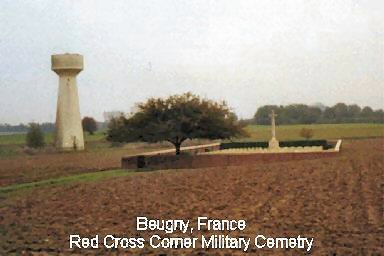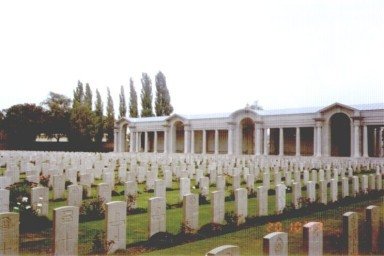

Thomas Addiss was born on the 30 January 1899 at 6 Lime Street, a small terraced house in Coppice, Sedgley, Staffordshire. He was the only son amongst the 9 children of Josiah and Julia Addiss (nee Caswell), my 2 x Great Grand Parents. His eldest sister Julia was my Paternal Grandmother's mother.
He died on the 21 March 1918, just 19 years, 1 month and 22 days later near the village of Beugny during the battle for the Arras region of the Somme in nothern France. He has no known grave.
The fourth Battle of Arras was fought in March 1918. It began when German armies under the command of General Karl von Bülow, in a last ditched effort, attempted to break through the Allied front near Arras. The Allied armies were forced to retreat in a sector north of Arras, but the attack exhausted 15 German divisions. General Haig considered the German offensive a failure.
Thomas enlisted in the Worcestershire Regiment at Bilston, Staffordshire, (Private 41852)
 |
Thomas' name is on War Memorial at St. Mary's Church, Hurst Hill, West Midlands, see photograph, (incorrectly spelt with only one 'S'), also in the Worcetershire Regiment's memorial book in Worcester Cathedral and on the Memorial in Arras, Northern France.(see below) |
 |
Beugny is a village 5 kilometres north-east of Bapaume on the N30, Bapaume to Cambrai road. Red Cross Corner Cemetery is on the west side of the village to the south side of the N30. Plot I of the cemetery (except Row "K") was made in April, 1917 to March, 1918, by Field Ambulances and fighting units. In March-August, 1918, the Germans buried 350 of their dead and ten British on the North and West sides of the cemetery, in BEUGNY MILITARY CEMETERY, No. 3; and they also buried 25 British dead of the 21st March in Plot I, Row "K". In September, 1918, Plot II was made by British troops. The German graves were removed after the Armistice to another cemetery, and the British graves among them were transferred partly to Delsaux Farm Cemetery and partly to Favreuil British Cemetery. There are now over 200, 1914-18 war casualties commemorated in this site. Of these, over 10 are unidentified and one, destroyed by shell fire in 1918, is represented by a special memorial. The cemetery covers an area of 958 square metres, including the path which leads to it and is enclosed by a red brick wall. There are a total of 205 U.K., 10 Australian, 4 South African, 1 German burials, and 1 special memorial in the cemetery. |
 |
On a visit to France with my father in October 1999, we visited a Military Cemetery at Beugny just north of Bapaume and in the cemetery called Red Cross Corner we found the headstones of 2 soldiers (nearest the camera) of the Worcestershire Regiment (Lance Cpl L. Lawrence & Pvt. F. Neale) both of the same Battalion as Thomas who died on the same day as Thomas. Also at the far end of the same row are 7 headstones to Unknown Soldiers. Is one of these Thomas? |
 |
The Arras Memorial is in the Faubourg-d'Amiens Cemetery, which is in the Boulevard du General de Gaulle in the western part of the town of Arras. The cemetery is near the Citadel, approximately 2 kilometres due west of the railway station. The Memorial commemorates almost 35,000 casualties of the British, New Zealand and South African Forces who died between Spring 1916 and 7th August 1918, with the exception of casualties of the Battle of Cambrai in 1917, and who have no known grave. The design, by Sir Edward Lutyens, consists of a cloister, 25 feet high and 380 feet long, built up on Doric columns and faces west. In the broader part of the site the colonnade returns to form a recessed and open court, terminated by an apse. The names of the casualties are carved on stone panels fixed to the cloister walls. |
 |
3rd Battalion Worcestershire Regiment's War Diary for the 21st March 1918 |  |
The 3rd Worcestershire had been roused on March 21st by the thunder of gun-fire and the burst of heavy shells near their camp. No casualties were suffered by the Battalion, but all ranks realised that the great attack had begun. Word came to be prepared to move. The troops got ready : breakfasts were eaten. Then came a long wait : no definite news had come through from the front.
It had previously been arranged that in case of necessity the several Brigades of the 25th Division should assist different Divisions further forward ; the 74th Brigade had been detailed to assist the 51st (Highland) Division. Shortly before midday the Brigadier was summoned to the Headquarters of that Division ; and presently orders to advance came back to the battalions. The attacking Germans, as we have told, had broken through the front of the Highlanders, had taken Louverval and Doignies and were nearing the reserve positions east of Beaumetz. The 74th Brigade received orders to deliver a counter-attack against Louverval.
The Brigade moved forward along the line of the main road from Fremicourt to Beugny and then deployed. The 11th Lancashire Fusiliers and 9th Loyal North Lancashire advanced extended on either side of the main road,. a thousand yards behind them, the 3rd Worcestershire followed on in support. At the Crucifix north east of Beaumetz the leading battalions halted ; behind them the 3rd Worcestershire deployed astride the road and then lay down.
Big shells were exploding in every direction, but from the position of the Battalion the enemy's infantry were not in sight. The Battalion lay waiting throughout the afternoon, for the expected counter-attack in front -did not take place. The requisite artillery support could not be obtained, and the plans were changed. The counter-attack against Louverval was first postponed and then abandoned, and the 3rd Worcestershire remained inactive without further orders until dusk.
Dusk of March 21st was followed by darkness, a darkness lit in every direction by the flash of guns and the blaze of bursting shells. At 6.15 p.m. the 3rd Worcestershire were ordered to move off to the left. The enemy were stated to have broken through at Lagnicourt, and the Battalion was ordered to occupy the "Third System" of defence about Morchies. The companies reached Morchies about 7 p.m. and found the trenches there already full of mixed troops, mostly of the 6th Division. Arrangements were difficult in the darkness, but eventually Colonel Whally decided that the Battalion should dig in behind the existing trenches, across the spur which runs past the western side of Morchies northwards to Lagnicourt.
The four companies entrenched themselves, "A" Company forward, "B" and "D" Companies in second line, and "C" Company in support . Battalion Headquarters were established in a dugout near the main road. No attack on the position developed during the night, though gun-fire was continuous all around. Early next morning came orders for Colonel Whalley to report for duty at Brigade Headquarters, leaving Major R. F. Traill in command of the Battalion.
Note: During the day 3 Officers and 14 other ranks were killed with 1 Officer and 49 other ranks wounded.
| The Soldier by Rupert Brooke (1887-1915)
If I should die, think only this of me: Dulce et decorum est Pro patria mori by Wilfred Owen M.C.(1893-1918)
My friend, you would not tell with such high zest Translation: "It is sweet and meet (fitting) to die for one's country."
|
| Search the whole Sedgley site |